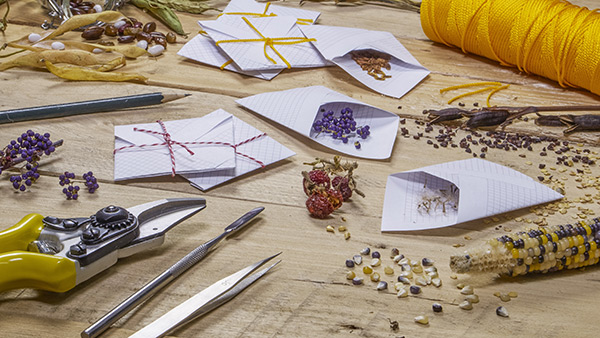
Breaking News
 Silver up over $2.26... Today! $71.24 (and Gold close to $4500)
Silver up over $2.26... Today! $71.24 (and Gold close to $4500)
 GARLAND FAVORITO: More and more fraud from the 2020 election in Fulton County, Georgia...
GARLAND FAVORITO: More and more fraud from the 2020 election in Fulton County, Georgia...
 Rep. Matt Gaetz tells Tucker Carlson that agents of the Israeli govt tried to blackmail his...
Rep. Matt Gaetz tells Tucker Carlson that agents of the Israeli govt tried to blackmail his...
 Trump: We need Greenland for national security… you have Russian and Chinese ships all over...
Trump: We need Greenland for national security… you have Russian and Chinese ships all over...
Top Tech News
 Travel gadget promises to dry and iron your clothes – totally hands-free
Travel gadget promises to dry and iron your clothes – totally hands-free
 Perfect Aircrete, Kitchen Ingredients.
Perfect Aircrete, Kitchen Ingredients.
 Futuristic pixel-raising display lets you feel what's onscreen
Futuristic pixel-raising display lets you feel what's onscreen
 Cutting-Edge Facility Generates Pure Water and Hydrogen Fuel from Seawater for Mere Pennies
Cutting-Edge Facility Generates Pure Water and Hydrogen Fuel from Seawater for Mere Pennies
 This tiny dev board is packed with features for ambitious makers
This tiny dev board is packed with features for ambitious makers
 Scientists Discover Gel to Regrow Tooth Enamel
Scientists Discover Gel to Regrow Tooth Enamel
 Vitamin C and Dandelion Root Killing Cancer Cells -- as Former CDC Director Calls for COVID-19...
Vitamin C and Dandelion Root Killing Cancer Cells -- as Former CDC Director Calls for COVID-19...
 Galactic Brain: US firm plans space-based data centers, power grid to challenge China
Galactic Brain: US firm plans space-based data centers, power grid to challenge China
 A microbial cleanup for glyphosate just earned a patent. Here's why that matters
A microbial cleanup for glyphosate just earned a patent. Here's why that matters
 Japan Breaks Internet Speed Record with 5 Million Times Faster Data Transfer
Japan Breaks Internet Speed Record with 5 Million Times Faster Data Transfer
Home gardening tips: For how long can you store vegetable seeds?

(Natural News) Growing your own food gives you access to fresh fruits and vegetables – something that is invaluable post-SHTF.
Knowing how to store seeds properly ensures that you're always ready for the next planting season. To the untrained eye, dry and brittle seeds may seem useless. However, gardeners know that vegetable seeds are key to starting and maintaining a bountiful garden. (h/t to GardenerThumb.com)
Seed germination rates
If you're not sure where to start, check out this chart of how long vegetable seeds last.
Asparagus (can remain viable for three to five years) – 50 percent germination for five years. Commercial seeds must be at least 75 percent viable.
Beans (can remain viable for three years) – 50 percent germination for three years. Commercial seeds must be at least 80 percent viable.
Brussels sprouts (can remain viable for four years) – 50 percent germination for five years. Commercial seeds must be at least 75 percent viable.
Carrots (can remain viable for three years) – Germination rates decline after three years. Commercial seeds must be at least 55 percent viable.
Corn (can remain viable for three years) – 50 percent germination for three years. Commercial seeds must be at least 75 percent viable.
Dill (can remain viable for four to five years) – 50 percent germination for five years.
Eggplant (can remain viable for five to seven years) – 50 percent germination for five years. Commercial seeds must be at least 60 percent viable
Lettuce (can remain viable for five years) – 50 percent germination for five years. Commercial seeds must be at least 75 percent viable.
Onion (can remain viable for one to two years) – 50 percent germination for two years. Commercial seeds must be at least 70 percent viable.
Pumpkin (can remain viable for four to six years) –50 percent germination for six years. Commercial seeds must be at least 75 percent viable
Radish (can remain viable for five years) – 50 percent germination for five years. Commercial seeds must be at least 75 percent viable.
Squash (can remain viable for four to six years) – 50 percent germination for six years. Commercial seeds must be at least 75 percent viable.
Tomatoes (can remain viable for four to 10 years) – Commercial seeds must be at least 75 percent viable.
Zucchini (can remain viable for four to six years) – 50 percent germination for six years. Commercial seeds must be at least 75 percent viable
Seed storage methods
Storing seeds properly ensures that you have good samples when testing for viability.
Drying
When gathering seeds from your own crops, spread the seeds on a newspaper and let them air dry for one week. Label the seeds so you don't get confused while drying. (Related: A crash course in intensive gardening.)
Once the seeds are dry, pack the seeds into small envelopes or paper packets. Label each envelope or packet with the plant name and other details.
Alternatively, you can dry saved seeds on paper towels. The seeds will stick to the towels when dry. Roll paper towels with seeds tightly before storing them. When it's planting season, tear off bits of the towel one seed at a time then plant the seed and towel right in the soil.
When saving your own seeds, plant open-pollinated varieties because they will come back true while hybrids won't.



